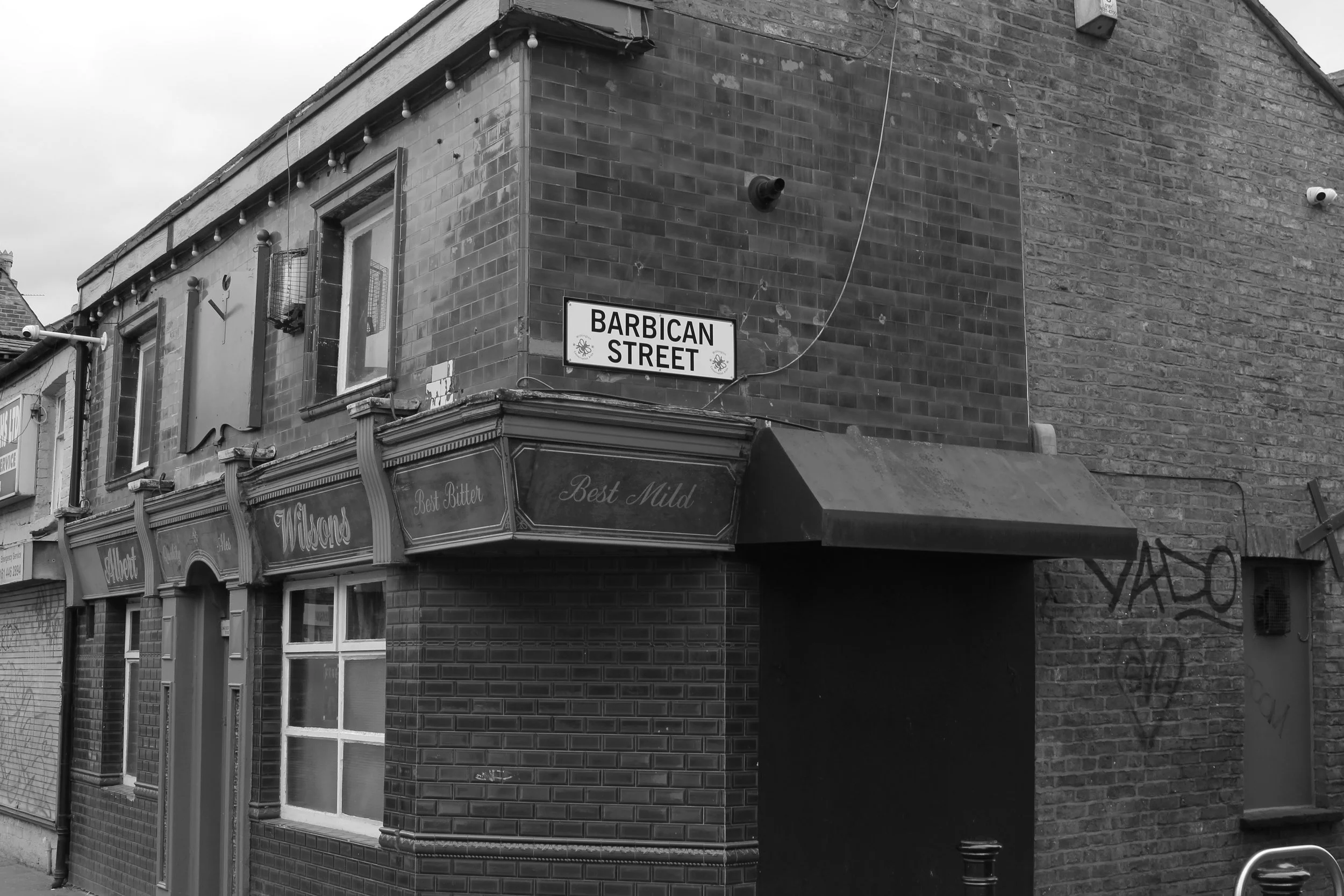Withington…revisited
/Image by Gursh Nijjar
By Andrew Edgeworth
Many things have changed since I last stepped out into what was then a relatively new place. The Coronavirus pandemic has gone (apparently) and I have now been resident in this neighbourhood for a few years.
The divide still stands, the border remains intact between Withington and Didsbury. But the margins have shifted. It is now a hinterland of socio-economic divide, a chasm of circumstance.
On the surface much remains the same. Tony Wilson’s ghost still haunts Palatine Road while The Christie continues to consume; a shiny new behemoth now dominates the skyline in the name of research while its tentacles spread parking permits into neighbourhoods that didn’t ask for them.
Like everywhere Withington is in a state of post-pandemic paramnesia, unsure of what its current raison d'etre is or what it wants to become. The solitary mask-wearer is now gazed upon with undue scrutiny, a memory that is no longer acknowledged as fact.
The penitent queue outside St Cuthbert’s foodbank is now a desperate mob. One of dozens that keep people alive, a new normality Britain where elected members give the thumbs up for the cameras as another opens its doors.
Outside Sainsbury’s the beggars have been replaced by hordes of delivery drivers mounted on high-speed electric death-traps; silent killers with no lights or road sense which have increased threat to life. Progress is measured in the warmth of a takeaway pizza while its overworked emissary is left to perish by the roadside.
This end of Burton Road reflects modern Britain while the other is a recession proof haven for those immune to social hardship. Even the students have changed. Only those who can afford it remain, a middle-class education for an extortionate fee. Craft ale and thrice-daily takeaways have replaced cheap vodka and noodles. Expensive cigarettes and Class-A’s are in vogue. Roll-ups and poppers are out.
Moving on to the heartbeat of Withington I fall headlong onto Copson Street. Today it is an uneasy place with an air of menace that resonates throughout. The eccentric characters have developed an edge and the Co-op is now a source of entertainment where regular ructions are rife in the reduced section.
At the entrance an Irishman bemoans the local NHS to an inexplicably tall woman with an inexplicably large dog. Within, an antagonistic Spanish-speaking woman with an aggressive drug habit is being asked to leave by tired looking staff members. Others are there to get in and out. Head down, shop done, avoid everybody. An elderly lady in pyjamas holds forth a baguette like a sword and marches on the checkout.
During the heady days of COVID, I ventured into the Co-op on a state-supported shopping expedition where I discovered a somewhat bizarre scene that has stuck with me as my abiding memory of that strange and desperate time.
It was early on a Saturday morning and the store was full of crestfallen pensioners who crawled round the aisles whilst being serenaded by Roy Orbison’s ‘Only the Lonely,’ courtesy of Co-op’s instore radio. A Cohen brothers scene etched to memory.
This is a far cry from the independent food stores of Didsbury. There the in-crowd flock wearing identical coats that Canadian birdlife pay a brutal price for in the name of middle-class uniformity. Implants and fillers limit expression, seemingly made up for by identical garish attire and expensive electric vehicles. Walking oxymorons who run on coffee and cocaine.
But even the sacred village is not what it was. Pizza chains have replaced bars and coffee houses are now artisan bakeries. The cycle continues. A dessert bar that at first glance could be anything from a bodega to a brothel is conspicuous beside the fishmongers. Seven pound pints fight for custom with three quid croissants.
That said Withington is no different in its own way. Post-pandemic businesses come and go with the seasons. The record store has gone along with the a few fast-food outlets. It has evolved and regressed in equal measure. Glitches in the matrix have resulted in communal deja vu.
Of course, the hardy prevail. The laundrette on Wilmslow Road is on an eternal spin cycle while the grocers on Copson Street remains a ray of hope to the lonely.
Derelict municipal buildings were refurbished into grand bars selling over-priced food, only to shut down soon after. Vapes are the new mobile phones with bubble-gum refills replacing top up cards.
A new craze for Turkish barbers makes one curious as to why there are so many in one place. Too many barbers, not enough heads. Newsagents have moved two doors down. Empty buildings demand cheaper rent.
The Orion has had a refurb. Once the home of mobility impaired scooter owners it is now teeming with students. Is this a pandemic induced shift? Did the previous denizens die off or is the new clientele just more profitable?
But hope remains – Marcus Rashford looks over Withington, his mural a symbol of what is good and can be achieved. United fans still cling to past glories while City’s bask in dominance. Football is still the word on the street, even if it is preceded by tales of struggles and woe.
The vibe is different in Withington now. A shift in psyche brought about by a range of influences has changed the course of its evolution. The virus, Brexit and the growing sense of uncertainty. The border remains between Withington and its neighbours. This is a more complex place as a result and less sure of itself. Didsbury watches on uneasily.
Andrew Edgeworth is a former journalist who has been writing fiction and creative non-fiction since 2013. He was awarded the 2017 Origins flash fiction prize was runner up in the 2019 Splash Fiction competition. His work has also been published by Fairlight Books. He lives in Manchester.


